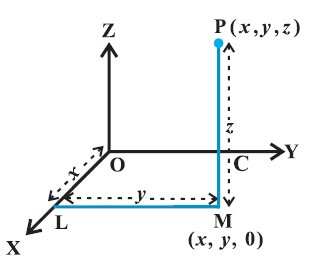Let me explain about Graphing Linear Inequalities in Two Variables,
A linear inequality in the two variables x and y looks like

where a, b, and c are constants.
A solution to an inequality is any pair of numbers x and y that satisfy the inequality.
The rules for finding the solution set of a linear inequality are much the same as those for finding the solution to a linear equation.
A linear inequality in the two variables x and y looks like

where a, b, and c are constants.
A solution to an inequality is any pair of numbers x and y that satisfy the inequality.
The rules for finding the solution set of a linear inequality are much the same as those for finding the solution to a linear equation.
- Add or subtract the same expression to both sides.
- Multiply or divide both sides by the same nonzero quantity; if that quantity is negative, then the inequality must be reversed.

 Let us learn about Coordinates of a Point in Space,
Let us learn about Coordinates of a Point in Space,